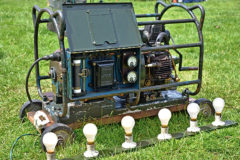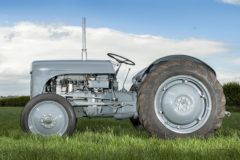British warship exports in the 1960s and ’70s
Posted by Chris Graham on 13th January 2022
Conrad Waters provides a fascinating, photographic retrospective of British warship exports during the 1960s and 1970s.
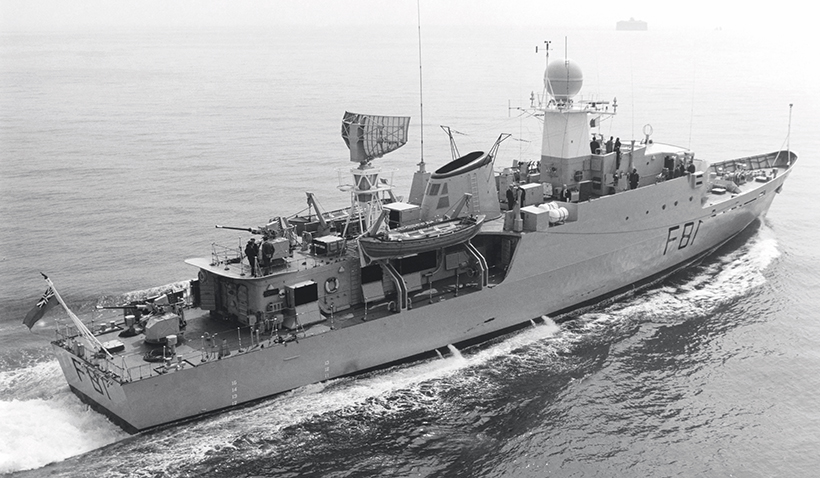
British warship exports: Perhaps best known for their high-speed craft, Vosper also developed a range of larger corvettes and light frigates during the 1960s, in conjunction with the Vickers shipbuilding and armaments group. Well suited for the requirements of the new navies of former colonies, these designs gained early success in Africa. Among these vessels were the two Mk.3 Dorina class corvettes which were ordered by Nigeria from what had by then become Vosper Thornycroft in March 1968. Displacing around 650 tons in full load condition, and at just over 200ft in length, they were relatively unsophisticated ships utilising diesel machinery and a gun-based armament. This photograph shows the lead ship, Dorina (F81), in the course of sea trials in the Solent during the early 1970s. Dorina and her sister, Otobo (F82), were later joined by an additional pair of larger Vosper Thornycroft Mk.9 corvettes, named Erin’mi and Enyimiri. All were named after the word for hippopotamus in various different Nigerian languages. (Pic: Vosper Thornycroft/author’s collection)
Recent years have seen a modest revitalisation of the United Kingdom’s naval exports. In particular, the selection of the Type 26 Global Combat Ship design as the basis for new shipbuilding programmes in Australia and Canada, has been notable for putting British maritime expertise ‘back on the map’. What’s more, a revamped National Shipbuilding Strategy will soon be published in the hope of building on this.
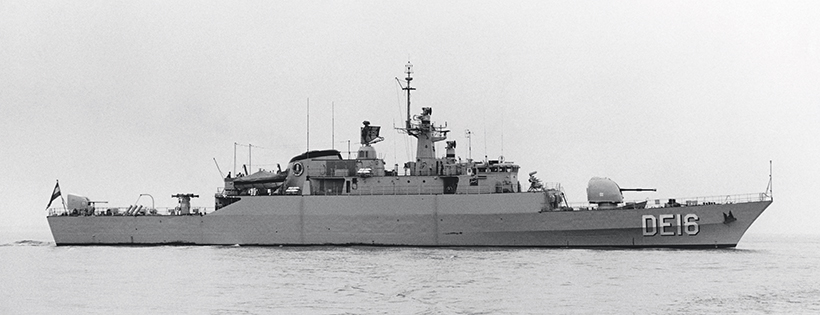
Dating from broadly the same era as the Dorina class were a quartet of larger and more sophisticated Vosper Thornycroft Mk.5 frigates, which were delivered to the then Imperial Iranian Navy in the early 1970s. Equipped with combined diesel or gas (CODOG) propulsion, they were reportedly capable of speeds of up to 40 knots when first built, and incorporated a powerful armament within their 1,400-ton hulls. Construction was shared between Vosper Thornycroft and Vickers. Initially known as the Saam class, all were renamed after the 1979 Iranian Revolution. This photograph shows one of the Vickers-built ships, Rostam (later Sabalan), around the time of her completion in 1972. Heavily damaged by an American bomb in April 1988 during the short-lived US-Iranian combat that arose during Operation Praying Mantis, Sabalan was later repaired and still remains in service. Interestingly, the Mk.5 design has been used as the basis for Iran’s new Moudge class frigates, while the class’s hull form influenced the Royal Navy’s current Batch 2 River Class design. (Pic: Vosper Thornycroft in author’s collection)
Further success certainly looks possible in the years to come. Babcock International’s new Type 31 ‘export frigate’ has recently been chosen as the basis for a new Indonesian warship project, and the company also looks set to play a major part in revitalising Ukraine’s navy. However, the majority of these projects will be based on exporting designs and technology overseas. While this work will still have considerable value for ‘UK plc’, few new warships will actually be built in British yards.
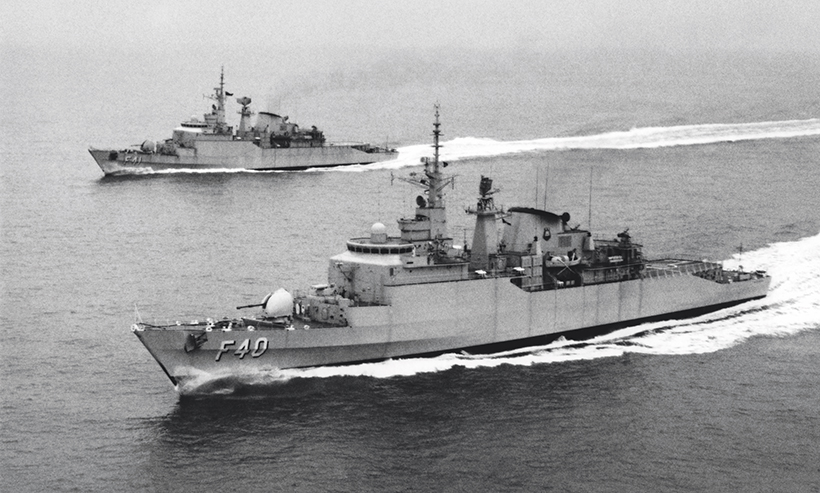
The ultimate examples of the Vosper Thornycroft line of frigates were the six Mk.10 or Niterói class vessels ordered under a contract with the Brazilian government in September 1970. Heralded as Britain’s largest ever naval export award at the time, the contract saw four of the new frigates built in the United Kingdom, and a further pair at the Naval Arsenal in Rio de Janeiro. A seventh modified variant was completed there later as the training ship Brasil. Displacing around 3,800 tons at full load, these CODOG-powered frigates were much larger than the other ships in the series, and were built in both general purpose and anti-submarine configurations, the latter incorporating the Ikara anti-submarine missile system. This photograph shows Niterói (foreground) operating alongside her sister Defensora off the south coast before the two frigates departed for Brazil. Niterói was to serve for nearly 40 years in the Brazilian Navy, being decommissioned for the final time in June 2019. (Pic: Vosper Thornycroft in author’s collection)
The situation was very different back in the 1960s and ’70s. During these years, a wide range of privately-owned British shipbuilders enjoyed considerable success in both designing and building naval vessels for overseas fleets. The newly-created Vosper Thornycroft, which had been formed through the 1966 amalgamation of Portsmouth’s Vosper with Southampton-based John I. Thornycroft & Co, was probably pre-eminent in securing export sales during this era. However, Vickers, Yarrow, Harland & Wolff and Brooke Marine were among other yards active in the market.

This stern view of the Niterói class frigate Defensora, taken in 1977, provides a good view of the Ikara anti-submarine missile launcher installed in the ASW-configured members of the type. This was replaced by a second 4.5in gun in those ships outfitted for general purpose operations. The frigate received a major mid-life modernisation, including significant armament changes, around the turn of the millennium, and has recently returned to sea after the completion of a further lengthy refit and renewal programme. It seems likely that this will allow her to complete at least half a century of service with the Brazilian fleet. (Pic: Vosper Thornycroft in author’s collection)
Ultimately, however, the period was to prove something of an Indian summer. The formation of the state-owned British Shipbuilders, in 1977, heralded a period of massive reorganisation and rationalisation that ultimately ended in failure when political change saw a decision to run down the industry. Some of the warship-building yards returned to private hands, but the end of the Cold War saw further downsizing. Today, photographs are one of the primary legacies of an outstanding period of British industrial achievement.

Independence was the first of six fast attack craft completed by Vosper Thornycroft for the Republic of Singapore’s Navy in the early 1970s. She is seen here being loaded onto the cargo ship Neptune Zircon on 20th October, 1970, before the commencement of the long voyage to her new home. Two of the class were built in the United Kingdom, but the remainder were assembled at the Singapore yard of what was then Vosper Thornycroft’s local subsidiary. Fabricated with a steel hull and aluminium superstructure, and displacing around 140 tons at full load, the class was constructed in ‘A’ and ‘B’ variants, incorporating different gunnery armaments. All completed more than 20 years of service before being retired during the course of the 1990s. The name Independence has been a popular one in the Republic of Singapore Navy, currently being used for the lead ship of a new class of eight littoral mission vessels, which utilise advanced technology to secure the city-nation’s coasts. (Pic: Vosper Thornycroft in author’s collection)

Somewhat larger and later than Singapore’s Independence class were the six, fast attack craft of the Constitución class that Vosper Thornycroft completed for Venezuela during 1974 and 1975. With a length in excess of 120ft, and a full load displacement of about 170 tons, they were built in both missile-armed and gun-armed configurations. Powered by MTU diesels, they were initially capable of speeds in excess of 30 knots. Federación, one of the missile-armed variants, is pictured here shortly before her delivery in 1974. All six of the class still remain on Venezuela’s fleet list, in another indication of the durability of British-built warships of the period. (Pic: Vosper Thornycroft in author’s collection)
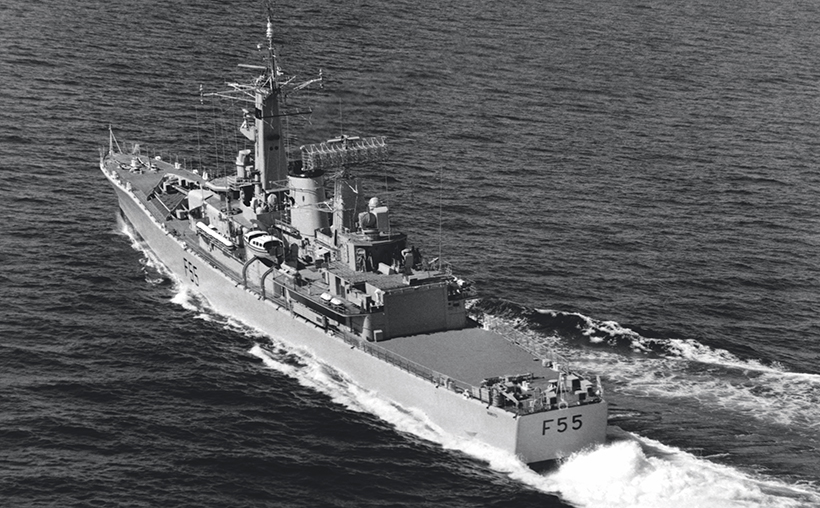
Although many British warship exports were specifically designed for overseas markets, the sale of Royal Navy designs was also an important source of business for the UK’s shipyards of the era. Yarrow, Vickers and Harland & Wolff were among the shipbuilders that secured orders in this way. This photograph shows HMNZS Waikato, one of a pair of Leander class frigates acquired by New Zealand in the late 1960s and 1970s. Completed by Belfast-based Harland & Wolff in 1966, she was sunk as an artificial reef after being decommissioned from the Royal New Zealand Navy at the end of the 1990s. (Pic: Crown Copyright)

Although not quite as prominent in the export markets as its south coast rival, Clyde-based Yarrow Shipbuilders scored a number of successes selling warships overseas. This photograph shows Rahmat, a l,600-ton light frigate ordered by Malaysia, departing Portsmouth Harbour towards the end of 1971 in the course of her delivery voyage. An interesting detail is the Mini car, perhaps a personal acquisition by the ship’s captain, stowed at the forward end of the helicopter deck. After serving over 30 years in the Malaysian fleet, the frigate enjoyed a brief second career as a museum ship until ongoing problems with water ingress resulted in a final journey to a shipbreaker’s yard. (Pic: Crown Copyright)
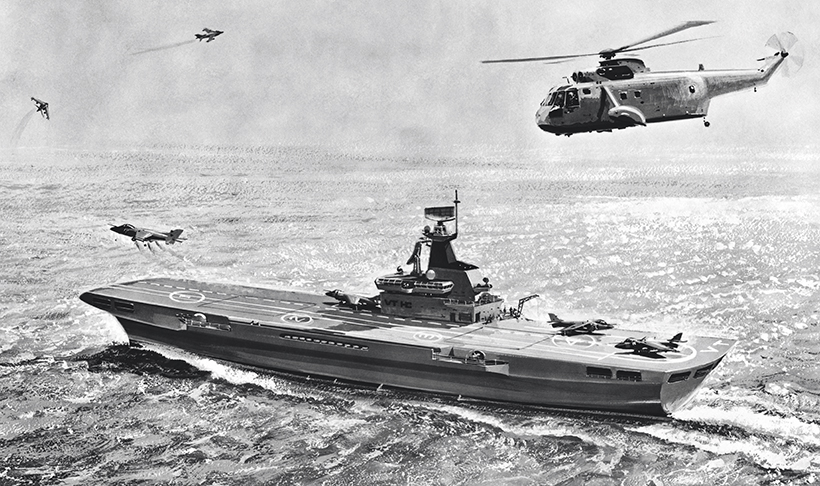
Not all of the wide range of British warships designed for export during the 1960s and 1970s ultimately achieved export success. One prominent failure was the Vosper Thornycroft Harrier Carrier, a 7,500-ton light carrier designed around the Sea Harrier FRS 1 jump jet that was about to enter Royal Navy service at the time. First revealed in 1975, the Harrier Carrier offered medium-sized navies the prospect of joining the ‘carrier club’ but ultimately failed to attract overseas interest. Designed to embark eight of the jets and two helicopters, the ship would have been powered by an innovative propulsion train that used gas turbine generators to power electric motors. This artist’s impression, released by the company in late 1975, shows what might have been. (Pic: Vosper Thornycroft in author’s collection)
For a money-saving subscription to Ships Monthly magazine, simply click here



